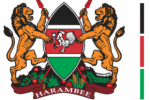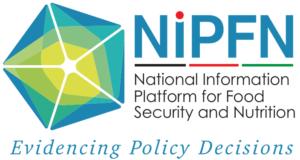- Version
- Download 139
- File Size 12.00 KB
- File Count 1
- Create Date October 5, 2023
- Last Updated October 13, 2023
Homabay County Nutrition Action Plan(CNAP) 2022 -2024
Executive Summary
The Kenya Food and Nutrition Security agenda identifies strategic objectives and corresponding key priority areas, which if implemented could greatly contribute to realization of optimal nutrition in Kenya. The purpose of the Homa Bay CNAP is to provide a framework for coordinated implementation of nutrition interventions by the government and nutrition stakeholders in Homa Bay County. It also provides an estimation of the total resources required to achieve the goal and objectives outlined in the Food and Nutrition Security policy. The cost estimates cover the three years (2022-2024) of implementation based on ideal situations and standard costing models. In general, the projected total cost for implementing the activities of the Plan for next three years is KSH 210,947,336.5
In undertaking this, the County proposes to scale up the implementation of nutrition interventions which include: Improving nutritional status of women of reproductive age (15-49 years), nutrition status of children less than five years, access to quality curative nutrition services, prevention, management and control of diet related NCDs, nutrition in schools, knowledge, attitude and practice on optimal nutrition; reducing the prevalence of micro nutrient deficiencies, preventing deterioration of nutrition status and saving lives of vulnerable groups in emergencies; strengthening the nutrition surveillance, coordination and partnership among the nutrition partners, monitoring and evaluation systems, and enhancing evidence-based decision making through operation research.
The Plan has been organized into chapters as follows: Chapter 1 is introduction whereby detailing the county profile, nutrition situation analysis, nutrition response, purpose of the CNAP and the main challenges. Chapter 2 spells out CNAP framework. Chapter 3 lists the Key Result Areas (KRAs) and implementation strategies. Chapter 4 outlines the implementation matrix, monitoring and evaluation framework and coordination for implementation of the CNAP and lastly, Chapter 5 details the resource mobilization and costing framework.
The HBCNAP is derived from KNAP and it identifies eleven key result areas for improved Nutrition programming within the county. Under each strategic objective, there are key outputs, proposed strategies and corresponding activities/interventions to be carried out with their respective expected outcomes.





